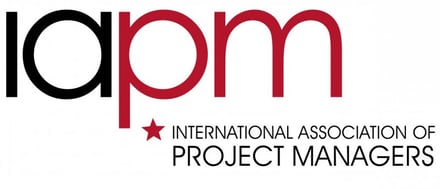The question "Agile or classic project management?" could currently be answered with a wink of the eye with "yes": Only 20% of the projects in the study Status Quo Agile 2016/2017 Respondents use agile procedures in their purest form, only 12% consistently use classic methods. The majority of 68% choose situational or work hybrid in a mixture of agile and classic methods. Please also read our article "Hybrid project management: classic with a dose of agility?".
Scrum is still clearly ahead on the popularity scale of agile techniques. For more than 50% of the users of agile approaches, Scrum is of central importance. Kaban (IT-Kaban) comes second with over 20%, followed by Lean and DevOps, according to the results of the study "Status Quo Agile 2016/17" by Prof. Dr. Ayelt Komus from Koblenz Univeristy of Applied Sciences.
Agil stands for speed, innovation and teamwork
Agile methods score better than classical project management in practically every partial evaluation by the study participants. Especially with regard to speed, time to market, the ability to innovate and teamwork, the ratings of agile methods are significantly higher than those of classical project management. The study can be requested free of charge on the Status Quo Agile website.
What exactly is agile project management?
 Agile project management is a generic term for various process techniques that are based on an empirical process model. They are often used when the process to achieve a certain end result, such as at the beginning of a software development, is difficult or impossible to plan. They also give the client the opportunity to adjust his requirements for the final product several times during the course of the project. There are a number of methods, of which Scrum has found the largest distribution worldwide.
Agile project management is a generic term for various process techniques that are based on an empirical process model. They are often used when the process to achieve a certain end result, such as at the beginning of a software development, is difficult or impossible to plan. They also give the client the opportunity to adjust his requirements for the final product several times during the course of the project. There are a number of methods, of which Scrum has found the largest distribution worldwide.
IAPM Agile PM Guide 2.0
The project management association IAPM International Association of Project Managers presents in its "IAPM Agile PM Guide 2.0" the most common forms of agile project management - Scrum and Kanban - and agile working methods like Extreme Programming. You can request the guide "Agile PM Guide 2.0" here.
In focus: Agile project management
Agile project management is more than just a fad. The first agile methods were already developed in the mid-1990s in the field of software development. The common feature of agile project management is an orientation towards empirical models, which are used in particular when the final result is not yet or only with difficulty predictable at the beginning of the project. Accordingly, agile project management includes the possibility to change or adapt the requirements during the course of the project. Scrum is the best known and most widespread method among agile approaches.
Already developed in the mid-1990s, agile project management Scrum was manifested in 2001 in the book "Agile Software Development with Scrum". Here still explicitly related to the topic of software development, the generalization to project management Scrum ("Agile Project Management with Scrum") and thus to the entire company followed in 2003. In rugby, the word Scrum itself refers to the crowd of players throwing in the ball. The analogy is intended to underline the work in small, self-organized units, which are given only one direction (goal) from the outside, but determine the tactics themselves to achieve the common goal.
In the Scrum world there are three roles: There is the Product Owner, the Development Team and the Scrum Master. The Product Owner is the customer or his representative. He makes sure that the customer's interests are implemented in the project. The development team works independently and autonomously to implement the customer's wishes. The Scrum Master acts as a coach, who ensures that the team can work as smoothly as possible.
Cooperation in Scrum project management is essentially based on four principles:
- Individuals and interactions are more important than processes and
Project Management Tools
- A functioning end result (e.g. software) is more important than a detailed documentation
- Active cooperation with the customer is more important than contractual
Fixations - Meaningful changes to the project goal are more important than stubbornly pursuing of the original plan
Other agile methods
Scrum
 Scrum is currently the most popular method for agile project management. However, there are numerous other agile techniques such as Kanban, Extreme Programming, MVP, Feature Driven Development, Test Driven Development or Crystal Clear. The term agile project management is more and more used as a generic term for those approaches that differ significantly from the classic waterfall method.
Scrum is currently the most popular method for agile project management. However, there are numerous other agile techniques such as Kanban, Extreme Programming, MVP, Feature Driven Development, Test Driven Development or Crystal Clear. The term agile project management is more and more used as a generic term for those approaches that differ significantly from the classic waterfall method.
Kanban
 Developed in the 1950s, Kanban (Japanese for "signal card") originally comes from the production control system of Toyota. The aim here is to efficiently control each manufacturing or production stage and in particular to optimise the flow of materials. In the transfer to IT, Kanban elements from Lean Production, Lean Development and the Theory of constraints were added. The result is a separate agile project management system, which limits the number of parallel tasks and thus aims to achieve shorter throughput times. In particular, bottlenecks are to be avoided, as these are quickly visible.
Developed in the 1950s, Kanban (Japanese for "signal card") originally comes from the production control system of Toyota. The aim here is to efficiently control each manufacturing or production stage and in particular to optimise the flow of materials. In the transfer to IT, Kanban elements from Lean Production, Lean Development and the Theory of constraints were added. The result is a separate agile project management system, which limits the number of parallel tasks and thus aims to achieve shorter throughput times. In particular, bottlenecks are to be avoided, as these are quickly visible.
The IT-Kanban is based on the following principles:
- Visualization of all stations of the work flow on a kanban board: The individual tasks, for example noted on an index card, then move from left to right through the individual stations of the value chain.
- Work in progress limit: A maximum number of tasks that can be processed simultaneously per station is defined.
- Control and analysis of the work flow: Improvements in the work process are developed by analyzing measured variables such as queue length or throughput time (from station to station or the total throughput time).
- Formulating explicit rules for the process: for example, defining what the term "finished" means or in what order, i.e. according to what prioritization, the task cards are taken
- Continuous improvement and promotion of leadership: This means that the employees concerned submit concrete suggestions for improvement and these are seriously discussed at all organizational levels.
DevOps
The model called DevOps, an artificial word made up of the terms development and (IT) operations, has a strong reference to IT and software. The aim is to achieve more effective and efficient cooperation between the areas of development (Dev), IT operations (Ops) and quality assurance (QA). With DevOps, the software is to be developed in a better quality, it is to be developed faster and the cooperation of the teams involved is to be improved. Consistently thought through to the end, DevOps refers to the cross-departmental, company-wide collaboration of managers, developers, testers and administrators with the involvement of customers. All those involved pull together and have the common goal in mind: the provision of software for the customer.
Advantages and disadvantages of agile approaches
 Agile project management brings a number of advantages, no matter which model you ultimately choose. First and foremost, agile project management stands for:
Agile project management brings a number of advantages, no matter which model you ultimately choose. First and foremost, agile project management stands for:
- more flexibility
- speeding up implementation
- less planning effort
- Reduced management and administration costs
- high adaptability
- high degree of personal responsibility of the teams
These advantages are worth their weight in gold, but there are also a few aspects that represent the downside of agile project management, especially for company-wide project and resource management:
- High communication effort: Agile methods work very well if only one department is involved and there is little or no dependency on the result. Very often agile development projects are part of larger customer projects. The communication and coordination effort for the project manager to be able to provide information for the entire project is very high.
- Agile practices do not make the overall work less and do not increase the capacity of the organization.
- Tools agile project management: Agile project management is usually implemented in our own special software solutions. These are usually not integrated into the company-wide project management software. This results in considerable information deficits in these enterprise solutions, which are particularly noticeable when simulating future scenarios in the project portfolio.
- High demands on agile teams: Personal responsibility for agile teams sounds basically good. But the flip side is that the individual employees must be suitable for this and must be willing to take on this responsibility. Not every employee feels comfortable taking responsibility for his work.
- Low predictability for the final project result, as the target can be redefined at any time.
- No or hardly any documentation of the solution found.
- No resilient multi-project management possible, as agility does not allow for comprehensive planning.
Tips for introduction
The introduction of agile project management is a challenge, but not witchcraft. It is important that you start small and as simple as possible: Choose a team that wants to work agile and a small, clearly defined project. Agree on the agile project management method you want to use and make sure you have a common understanding of it. Make sure that you define the exact objectives of your initial agile project and make yourself aware of the risks. Do team members possibly need to be trained? Start by recording your successes and failures and learning from them. At the end of the project, document what has worked well and where you can still make improvements. Optimize your agile project management and start the next project.
Agile methods with risks for resource management
The representative survey makes it clear that agile methods are firmly anchored in the IT environment of companies in particular and enjoy great popularity. The problem in this context is that agile methods, which are usually operated using special tools, make company-wide capacity planning of employees almost impossible.
Jetzt anmelden - Can Do Newsletter
Why Do Projects Fail? 5 Common Reasons - And How to Avoid Them
Projects are often complex, and even with the best intentions and a competent team, success can elude us. But why do so...
Cost-Cutting - Increasing Efficiency Without Additional Resources
Cost-cutting is currently at the top of the agenda for many companies. In the face of economic uncertainty and rising...
.png?width=200&height=80&name=CanDo%20Logo%20transparent%20(500%20x%20200%20px).png)
